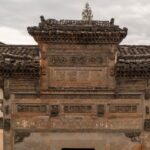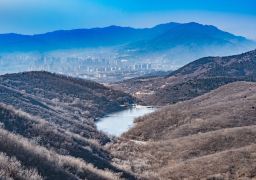The Xiaosha Tourist Area is located in Xiaosha Town, Dinghai District, Zhoushan City. Xiaosha Town has many cultural relics and historic sites and rich cultural landscapes. There is the Fuweng Hall listed as a cultural relic protection unit of Zhoushan City, Sanmao’s ancestral home, Shuailong Bridge and Tianhou Palace which are cultural relic protection units of Dinghai District. There is the Quiet Lecture Temple, a Buddhist holy place, and the Millennium Ancient Nunnery Jingtu Nunnery. There is the Xiaosha Ethnic Cultural Activity Center with ancient cultural architectural features. There is the ancient stone bridge in the secluded valley and clear brook – Silin Ancient Bridge. All these have formed a unique cultural atmosphere in Xiaosha and have extremely high tourism development value.
Sanmao’s ancestral home: Sanmao’s ancestral home was built by her grandfather Mr. Chen Zongxu in the last century and is located in Chenjia, Xiaosha Town.

Fuweng Hall: Located in Wangjia Village surrounded by green hills, Fuweng Hall was built in the 24th year of Hongwu in the Ming Dynasty and has a history of more than 600 years. According to county annals: In the early period of Hongwu in the Ming Dynasty, due to the self-recommendation of Minister Tang He, Emperor Zhu Yuanzhang of the Ming Dynasty issued an edict to relocate the residents of 46 islands in Changguo (now Zhoushan).
Xiaosha Tourist Area
The Xiaosha Tourist Area is located in Xiaosha Town, Dinghai District, Zhoushan City. Xiaosha Town h[...]









